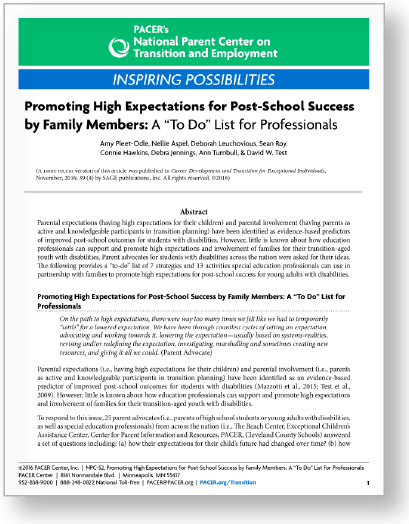Help families set high expectations for their youth.
High parental expectations and active parental involvement in transition planning are key indicators of positive post-school outcomes. Communicate and model high expectations for the youth you support, and encourage families to do the same.



